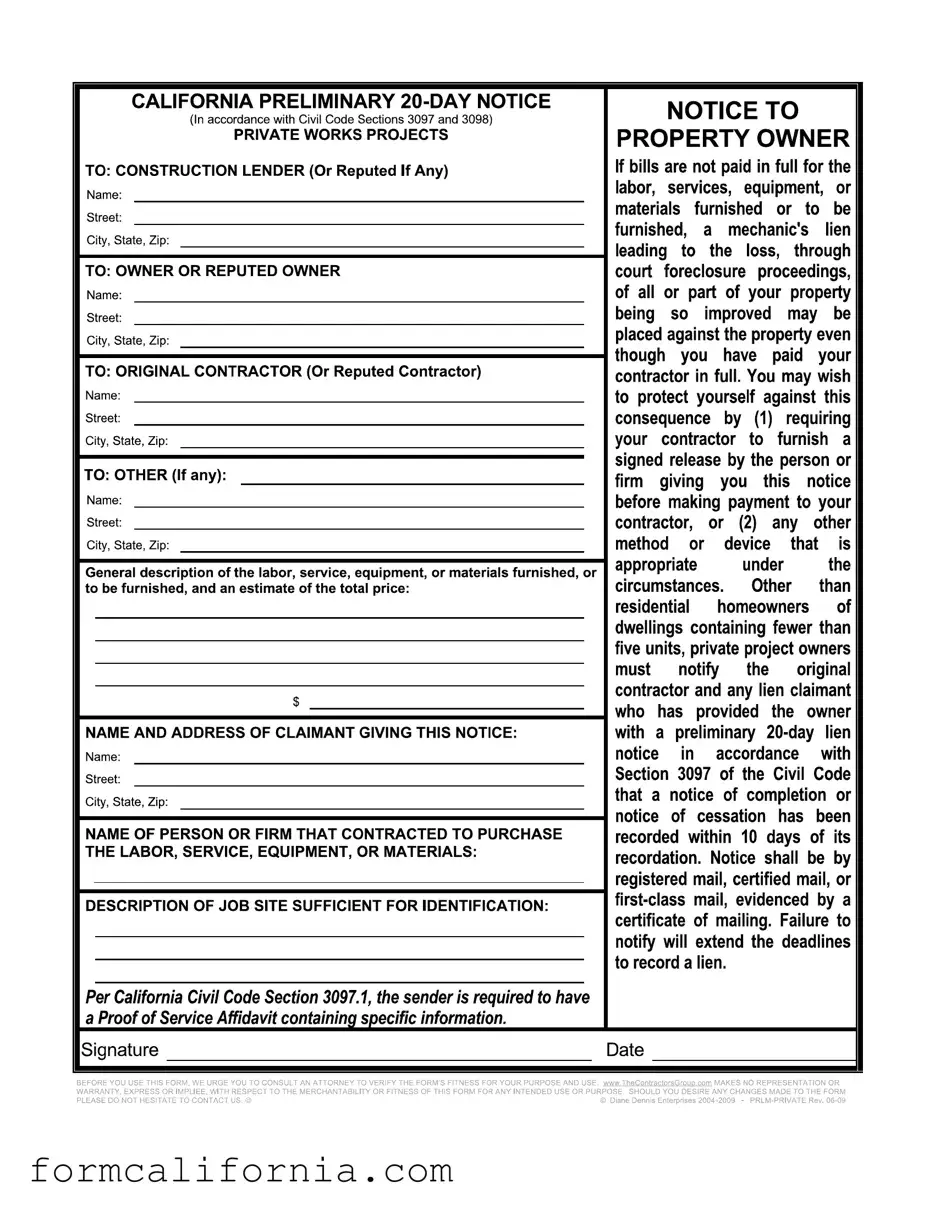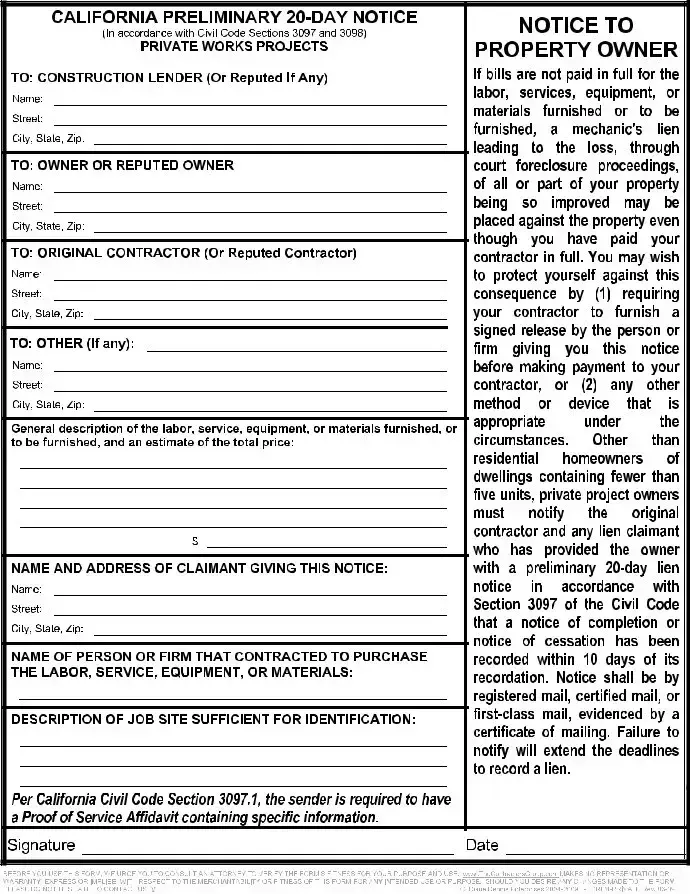The 20 Day Notice in California, required for certain legal or procedural actions, is similar to a number of other documents used within the realm of law and real estate. These documents, though varied in purpose, share commonalities in formal notice requirements, legal implications, and procedural roles. Understanding these similarities helps in grasping the broader context of legal notices and their functions.
One comparable document is the 3-Day Notice to Pay Rent or Quit, often used by landlords in many states, including California. Like the 20 Day Notice, this document signals the start of a specific legal process – in this case, eviction proceedings if the tenant fails to comply. Both serve as formal notifications to a party regarding the need to take immediate action to avoid further legal consequences.
The Preliminary 20-Day Notice, specific to construction law in California, is another related document. It's a prerequisite for mechanics to secure a lien on a property where they've provided labor or materials but haven't been paid. While it shares the "20-day" nomenclature with the 20 Day Notice, they both similarly initiate critical steps in safeguarding legal rights, albeit in different contexts.
Notice to Vacate forms, widely used across jurisdictions to inform tenants of the need to leave a property, also bear resemblance. Though the timelines may vary (ranging from 30 to 60 days, typically), like the 20 Day Notice, they are a key instrument in the property management and eviction process. Their primary function is to provide clear, legally recognized warnings to a tenant, marking the start of formal eviction if not complied with.
The Summons and Complaint in the realm of civil litigation bear similarities as well. This document notifies an individual or entity of the commencement of legal actions against them and outlines the basis of the complaint. Both the Summons and Complaint and the 20 Day Notice act as formal initiations of a legal process, requiring the recipient to take specific actions in response.
Lis Pendens, a notice of a pending lawsuit concerning real estate, also aligns with the 20 Day Notice's purpose. By announcing legal action that may affect the title or right to a property, it, like the 20 Day Notice, formally notifies interested or involved parties about significant legal proceedings that have direct implications on property interests.
Demand Letters, which require action or response by the recipient, such as repayment of debt or cessation of a wrongful activity, are related to the 20 Day Notice in their function as a precursory step to more formal legal actions. Both types of documents aim to resolve disputes out of court but come with the implicit understanding that failure to comply could lead to litigation.
Finally, the Notice of Default (NOD) issued by lenders when a borrower fails to make mortgage payments on time shares its essence with the 20 Day Notice. Serving as a formal warning that legal action (foreclosure, in this case) may follow, it gives the borrower a chance to rectify the situation, akin to the opportunity the 20 Day Notice provides for the recipient to address the issue at hand before the situation escalates.
While each of these documents serves distinctive purposes within various legal and procedural frameworks, their similarities to the 20 Day Notice in California illustrate the fundamental role of formal notifications in the legal system. They embody the principle that individuals and entities should be given fair warning and a chance to respond before being subjected to further legal action.

